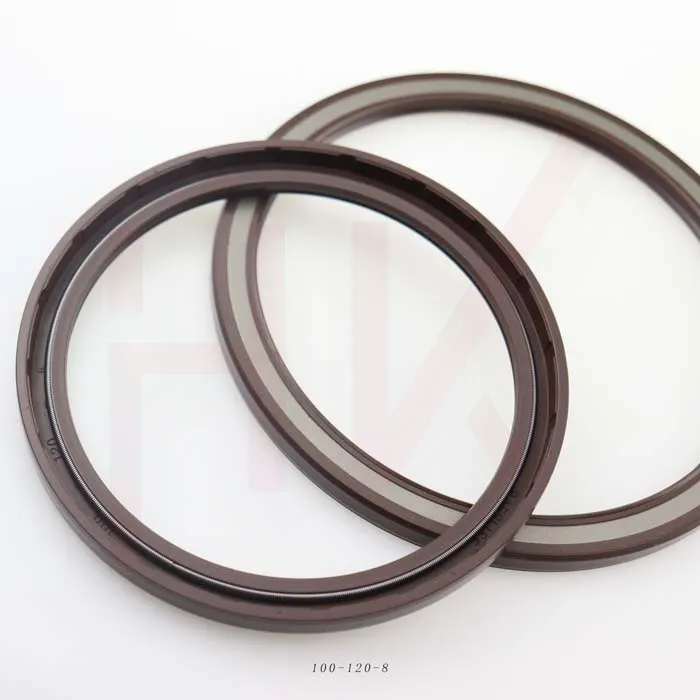11 月 . 04, 2024 18:19 Back to list
Hydraulic Motor Seals for Optimal Performance and Efficiency in Fluid Systems
Understanding Hydraulic Motor Oil Seals Importance, Types, and Maintenance
Hydraulic systems are essential in a vast array of industrial applications, where they serve to transmit power efficiently and effectively. At the heart of many hydraulic systems are hydraulic motors, which convert hydraulic energy into mechanical energy. A critical component of these motors is the oil seal, a seemingly small part that plays a significant role in ensuring the reliability and efficiency of the hydraulic system.
What is a Hydraulic Motor Oil Seal?
A hydraulic motor oil seal is designed to retain lubricant within the hydraulic motor and prevent the leakage of hydraulic fluid. These seals are generally made from various materials, including rubber, polyurethane, and PTFE (Teflon), each chosen for its compatibility with the fluid and environmental conditions. Given that hydraulic systems often operate under high pressures and temperatures, the seals must withstand extreme conditions while maintaining integrity.
Importance of Oil Seals
1. Leak Prevention One of the primary functions of a hydraulic oil seal is to prevent the loss of hydraulic fluid. Leaks can lead to reduced system efficiency, increased operational costs, and potential environmental hazards.
2. Contamination Control In addition to preventing fluid loss, oil seals help keep contaminants, such as dirt and moisture, out of the hydraulic system. Contaminants can cause abrasion and wear on components, leading to premature failure.
3. Pressure Maintenance Hydraulic systems operate under high pressure, and oil seals help maintain this pressure by creating a barrier that prevents the escape of fluid. Proper sealing ensures that the hydraulic system operates efficiently, translating to better performance and longevity.
4. System Longevity By effectively performing their functions, oil seals contribute significantly to the overall lifespan of the hydraulic motor and the system it belongs to. Regular inspections and timely replacements of seals can prevent catastrophic failures that might lead to costly repairs.
Types of Hydraulic Motor Oil Seals
There are various types of oil seals that can be used in hydraulic motors, each suited for specific applications
1. Rotary Shaft Seals These are circular seals installed at the point where the shaft meets the housing, preventing leakage as the shaft rotates.
hydraulic motor oil seal

2. Lip Seals Often made from rubber or polyurethane, these seals have a lip that creates a tight seal against the shaft, effectively blocking fluid from escaping.
3. U-Cup Seals Shaped like a U, these seals are often used in piston applications within hydraulic cylinders, providing excellent sealing against both dynamic and static conditions.
4. O-Rings Commonly used in a variety of applications, O-rings are circular seals that can be used to prevent leakage in both static and dynamic situations.
Maintenance and Replacement
Maintaining the integrity of hydraulic motor oil seals is crucial for the efficient operation of hydraulic systems. Here are some maintenance tips
1. Regular Inspections Regularly check for signs of leakage or wear around oil seals. Look for signs of fluid accumulation or discoloration of the seal material, which can indicate aging or excessive wear.
2. Proper Installation When replacing seals, follow manufacturer specifications to ensure proper installation. Improper installation can lead to premature failure and costly leaks.
3. Avoid Contaminants Keep the hydraulic system clean by minimizing exposure to dirt and other contaminants. Implementing proper filtration and maintenance protocols can extend the lifespan of both the seals and the hydraulic system.
4. Temperature Monitoring Monitor operating temperatures. High temperatures can degrade seal materials, leading to failures. If seals are exposed to extreme conditions, consider upgrading to high-temperature resistant materials.
Conclusion
Hydraulic motor oil seals, while often overlooked, are vital for the performance, reliability, and longevity of hydraulic systems. By understanding their importance, different types, and maintenance strategies, operators can ensure that their hydraulic systems remain efficient and effective. Investing time and resources into maintaining oil seals can yield significant long-term benefits, making it a critical aspect of hydraulic system management.
-
The Power of Advanced Sealing: High-Pressure Solutions for Modern Machinery
NewsOct.29,2024
-
Optimizing Machinery with High-Performance Oil Seals
NewsOct.29,2024
-
Maximizing Machinery Efficiency with Advanced Oil Seals
NewsOct.29,2024
-
Ensuring Equipment Longevity with Quality Oil Seals
NewsOct.29,2024
-
Enhance Equipment Performance with Quality Oil Seals
NewsOct.29,2024
-
Custom Oil Seals for Specialized Machinery Needs
NewsOct.29,2024
-
The Role of Wiper Seals in Dust Sealing and Oil Protection
NewsOct.20,2024
Products categories
















